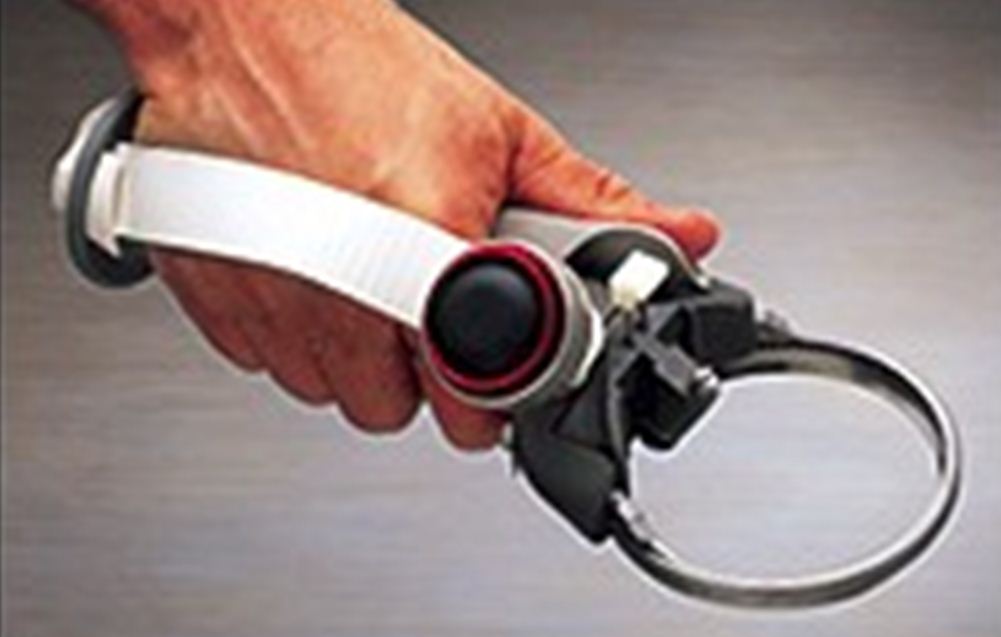 |
| Innovative strap on Whizard® knife (see comments below) |
Principles affected
Background
Constantly holding a hand tool can fatigue muscles (“static grip”), cause pain, and interfere with the ability to work efficiently. Furthermore, some tools are difficult to hold because they are slippery or require operation of buttons while holding.
In these situations, a strap for the tool can help. The strap attaches the tool to your hand, enabling a looser grip or ability to manipulate the hand better.
Objectives
Reduce static load on hand
Ideas and Options
Traditional straps
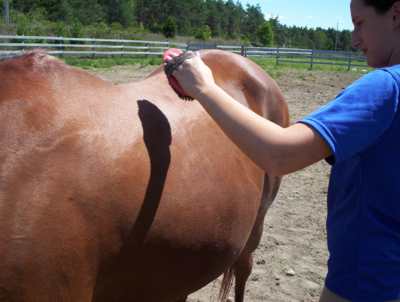 |
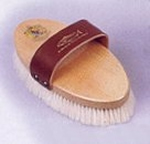 |
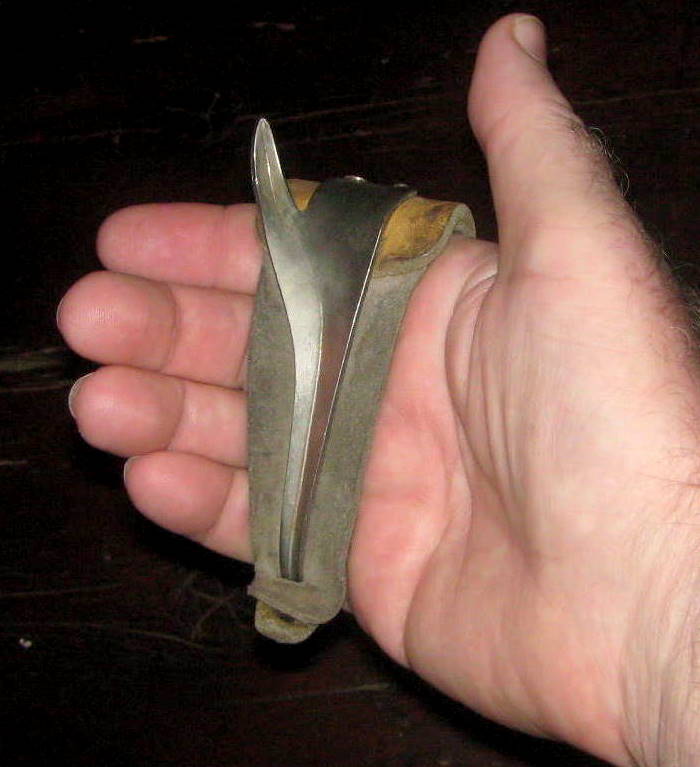 |
| Horse brush | Corn husker | |
Adding a hand strap to a tool is nothing new. Horse brushes are traditionally fitted with straps to ease the strain on the hand and permit use of the larger arm muscles. Less well known is the corn husker used in the 1800s: Farmers strapped spike-like scrapers to their hands to ease the arduous task of shucking corn for hours on end.
Contemporary straps and clips
 |
 |
| Camcorder strap | Paint pail |
More recently, it has become common for straps to be used with camcorders, in part because it is difficult to operate the buttons while simultaneously holding the camera with one hand. Similarly, a strap makes it easier to hold onto a paint pail that is otherwise awkward. Both of these examples involve grips that are essentially too big to be held easily (see Grip Design).
 |
 |
| Whizard Trimmer and AirShirz (www.bettcher.com) | |
Bettcher Industries includes straps for their power knives and scissors used in the meat and poultry industry. Many of the tasks in these operations involve constant holding of knives and scissors, which often become slippery because of the exposure to fat and moisture. The straps enable a looser and thus less strainful grip. Full disclosure: The author consulted with Bettcher and recommended the straps.
(Both of the powered tools above are innovations. The trimmer with its spinning circular blade dramatically reduces time and motions for certain tasks compared to a straight blade knife. The powered scissors significantly reduce hand strain and cycle time compared to manual scissors in operations such as textiles and poultry processing.)
Loops
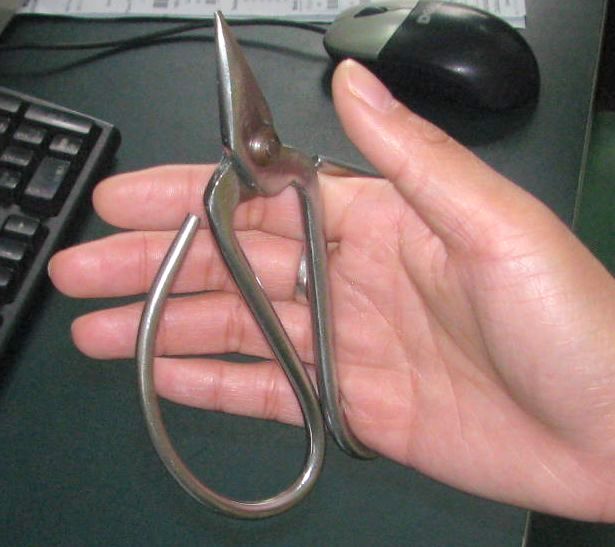 |
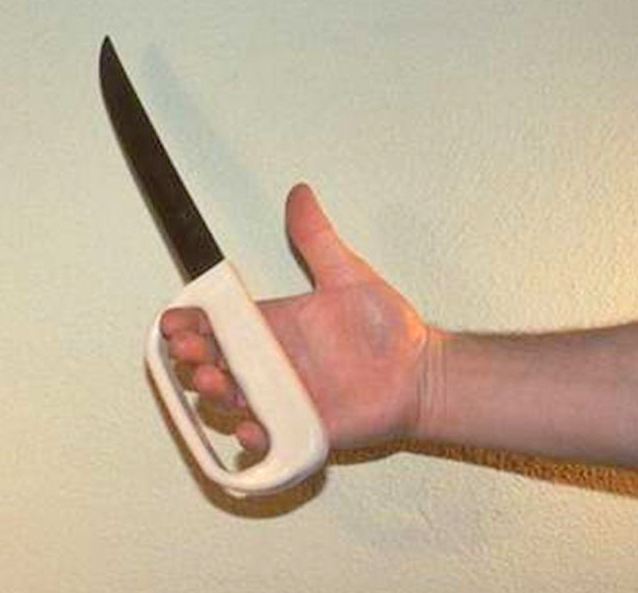 |
| Scissors hand loops | Knife bale guard |
Loops in the handle of a tool can have the same positive effect as a strap. The unconventional scissors above left enables the hand to be fully inserted into the handle. The bale guard at right is designed as a safety feature for certain tasks in meatpacking plant, but the handle enables the employees to hold the grip loosely in between cuts, which provides relief for the muscles.
These examples show that the design does not necessarily need to be a tight-fitting strap to have value. The concept may be applied in countless other tools, depending upon the task and situation.
Rings
 |
 |
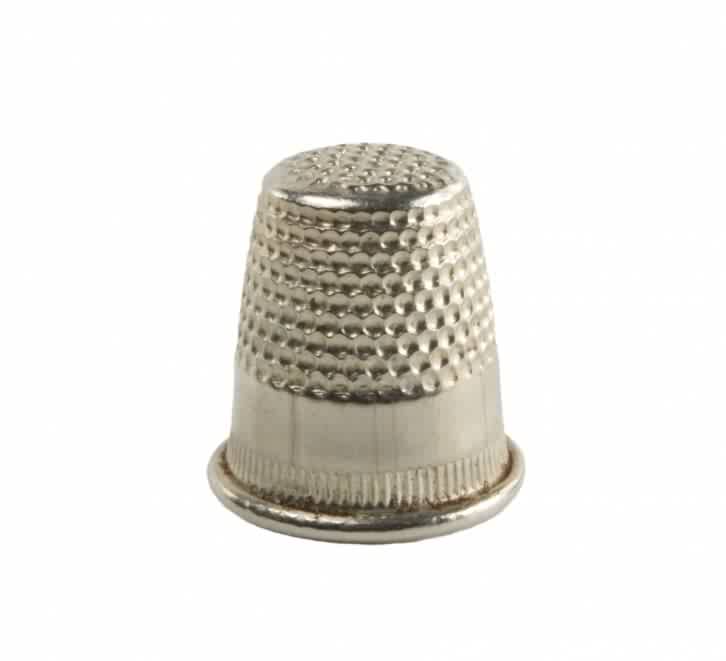 |
| Ring knife | Guitar thumb pick | Thimble |
A ring knife consist of a small curved blade worn on a finger. They used to be common in grocery stores in times past when items used to be wrapped in paper and then with string. The ring knife was a handy way to cut the string without needing to reach and pick up a scissors. They are still used today in some instances in the meat industry and elsewhere.
The guitar thumb pick provides another traditional example of a small “tool” that is worn on a ring. The author successfully implemented the use of a thumb pick in a manufacturing plant to peel off labels on parts, replacing an awkwardly held screwdriver.
The lowly thimble serves as another age-old example of wearing a small tool. All of these examples can serve as inspiration for inventing new low-cost, simple devices to solve problems.
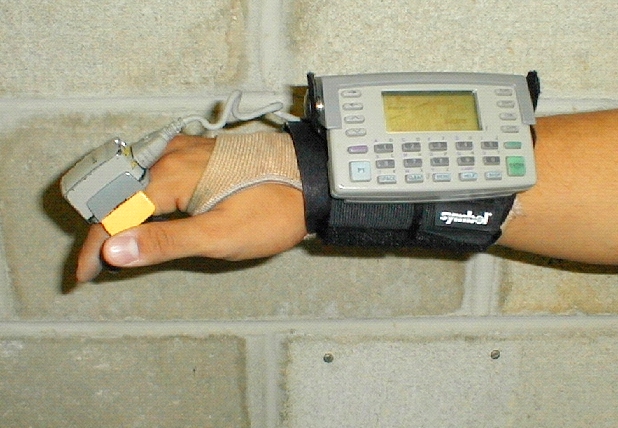 |
| Ring scanner |
A recent example of the ring concept is the scanner. Often, employees need to use their hands for other purposes while simultaneously holding a standard scanner. As a result the work is more awkward or requires constantly picking up and putting down the scanner.
The ring scanner resolves this problem by placing the sensor on the finger and the operation pad strapped to the wrist. Thus the hands are always free and the scanner instantly available. Additional styles are available that place the operation pad in a holster worn on the belt, using wireless technology. This approach reduces the weight on the arm and can be used in situations where the pad is not frequently accessed.
Assistive devices
 |
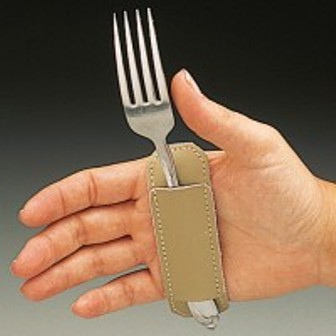 |
| Utensil straps (www.wrightstuff.biz) | |
Assistive devices designed for the elderly or people with disabilities provide an additional example. Straps such as those shown above can sometimes be used off the shelf for standard tools. Additionally, they serve as models for new equivalents for industrial hand tools.
As a closing comments, assitive devices of all types provide a host of innovative examples that can be used in industry. Products developed for people with disabilities can have equal value for everyone. Check stores, websites, and catelogs for assistive technology.
